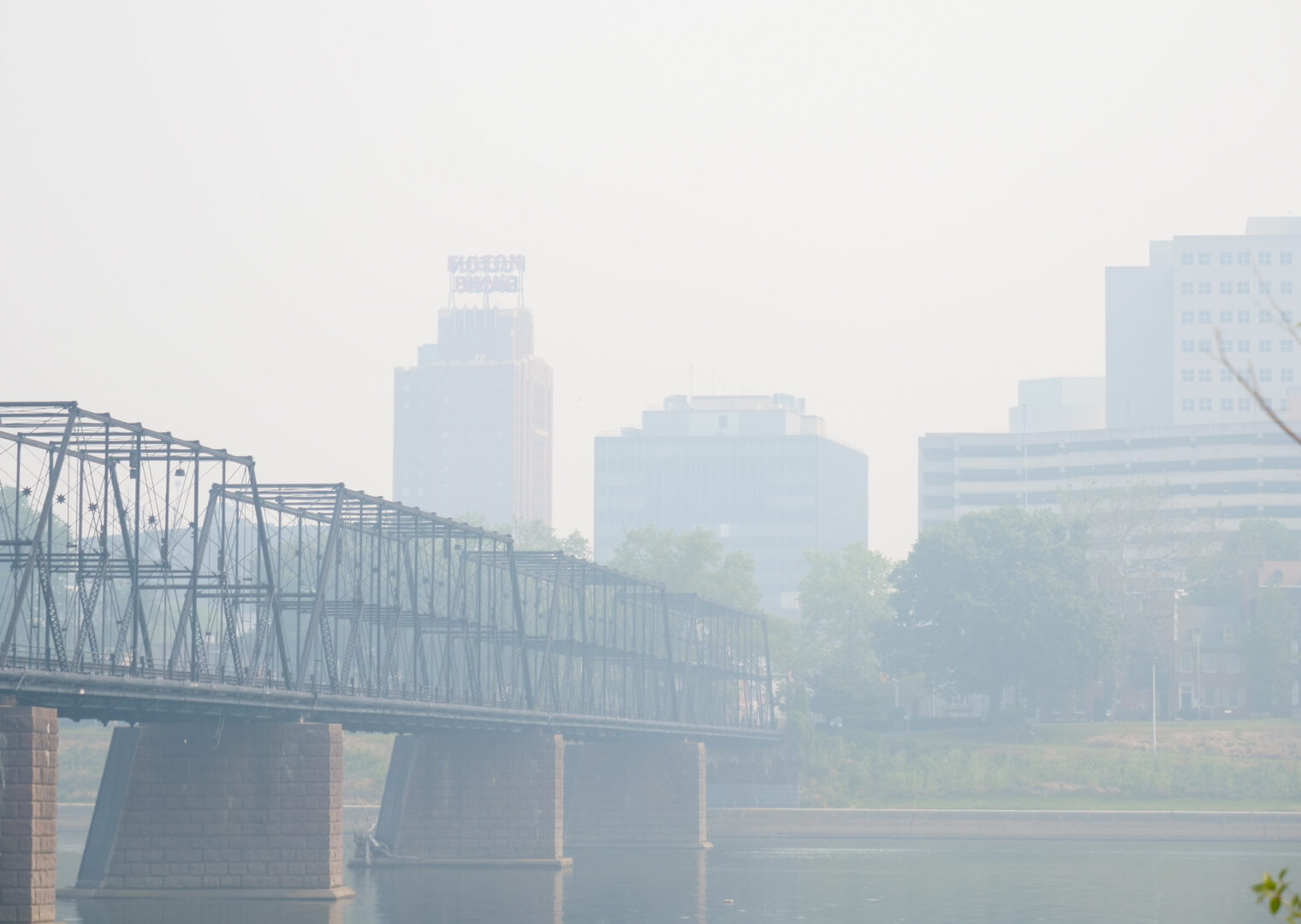
Haze hangs over Harrisburg as smoke from Canadian wildfires filtered into Pennsylvania on June 8, 2023. The smoke degraded air quality across Pennsylvania and other states in the northeast. Jeremy Long - WITF News


Haze hangs over Harrisburg as smoke from Canadian wildfires filtered into Pennsylvania on June 8, 2023. The smoke degraded air quality across Pennsylvania and other states in the northeast. Jeremy Long - WITF News

Haze hangs over Harrisburg as smoke from Canadian wildfires filtered into Pennsylvania on June 8, 2023. The smoke degraded air quality across Pennsylvania and other states in the northeast. Jeremy Long - WITF News
Listen here:
This summer was the hottest on record, globally.
Pennsylvania did not set records, but a new analysis shows it is still feeling the effects of climate change. And a separate analysis links the wildfire smoke that plagued Pennsylvania over the summer to climate change.
The state is getting warmer and wetter with climate change. Hot days and warm nights have been trending up since the 1970s.
“You’re absolutely seeing spans of days across this summer where the temperature was clearly made warmer by the influence of climate change,” said Peter Girard, vice president of communications for the science and communication group Climate Central.
There’s overwhelming scientific evidence that human activity is warming Earth at an unprecedented rate. It’s already responsible for extreme weather, rising sea levels, and more severe droughts worldwide. Pennsylvania is on track for more intense heat waves and stronger storms in coming years, the Department of Environmental Protection says.
Scientists stress that rapid action is crucial to avoid the worst effects. Pa.’s most recent Climate Action Plan calls for an 80% reduction of greenhouse gas emissions by 2050, compared to 2005 levels.
Doing that will require hard choices by the nation’s fourth-largest carbon emitter: Pennsylvania must figure out how to cut emissions while planning for the future of people and communities that rely on the fossil fuel industry.
—Madison Goldberg, StateImpact Pennsylvania
Join the discussion about climate and Pa. at Climate Solutions.
The group’s Climate Shift Index compares daily temperatures with a model showing likely temperatures in a world without the greenhouse gases that cause climate change.
Climate Central’s latest analysis using the CSI shows Harrisburg had eight days this summer with an index score of 2 or higher. That means the hot temperatures were twice as likely under climate change.
Philadelphia had nine days between June 1 and Aug. 31 touched by climate change, Pittsburgh had three, and State College had six.
In Allentown, there were seven days with a score of 2 or greater. Wilkes-Barre had five days and Erie had one.
The report says 97% of the U.S. population experienced at least one summer day with temperatures made at least twice more likely due to human-caused climate change.
The South, Southwest, and Southeast regions saw the strongest climate fingerprints on summer daily average temperatures.
An analysis from World Weather Attribution, a group that quantifies how climate change influences the intensity and likelihood of an extreme weather event, shows the record-breaking July heat waves in Arizona, New Mexico, and Texas would have been virtually impossible without human-caused climate change.
WWA also found climate change more than doubled the likelihood of extreme fire weather conditions in Canada in May and June that sent smoke into the U.S., causing unhealthy air quality in many places, including Pennsylvania.
StateImpact Pennsylvania is a collaboration among WITF, WHYY, and the Allegheny Front. Reporters Reid Frazier, Rachel McDevitt and Susan Phillips cover the commonwealth’s energy economy. Read their reports on this site, and hear them on public radio stations across Pennsylvania.
(listed by story count)
StateImpact Pennsylvania is a collaboration among WITF, WHYY, and the Allegheny Front. Reporters Reid Frazier, Rachel McDevitt and Susan Phillips cover the commonwealth’s energy economy. Read their reports on this site, and hear them on public radio stations across Pennsylvania.
Climate Solutions, a collaboration of news organizations, educational institutions and a theater company, uses engagement, education and storytelling to help central Pennsylvanians toward climate change literacy, resilience and adaptation. Our work will amplify how people are finding solutions to the challenges presented by a warming world.